It is a truth universally acknowledged that people who work in a rare book gallery are nerds. Over time, this nerdiness is inexorably expanded ??? or exacerbated, depending on your point of view ??? by our exposure to the books.
What this means is that we get excited about weird things. And by excited, I mean seriously excited. We???re talking seal-clapping exuberance over a dust jacket (as in the first time I saw a first edition of Hemingway???s Death in the Afternoon) or a small photograph (as in the signed vintage carte-de-visite of Robert E. Lee currently on display at our Las Vegas gallery).
What this also means is sometimes that excitement evolves into outright obsession. Because who knew that the publication history of Darwin???s On the Origin of Species was so fascinating? Or that polar explorers were such lunatics? Or that some of the most beautiful books published in the 20th century are stories you???ve never read, illustrated by people you???ve never heard of?
The Ship that Sailed to Mars is one of those stories, and William Timlin is one of those people. Published in England in 1923 in an edition of only 2000 copies ??? a mere 250 of which were made available in America ??? The Ship that Sailed to Mars contains 48 color plates, which alternate with 48 pages of Timlin???s own calligraphic text. It???s the story of an Old Man who has long dreamed of sailing to Mars ???by way of the Moon and the more friendly planets.???
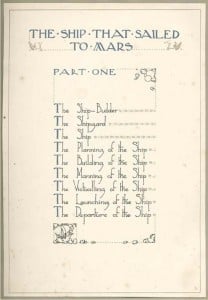
So, the Old Man sets about designing and building a ship. Helping him are several crones, the Elf King???s best metal-worker, and fairies. Lots of fairies. Naturally. They suffer through failed designs and false starts. They debate how many cabins the ship should have and what food they should bring. They select gifts for the fairies they will meet on Mars, for ???they have known from oldest times that on Mars there dwell those Fairies who fled the Moon when that unhappy planet cooled from sunny opulence to clearest shimmering ice.??? Until at last the Ship is a reality ??? one made of lightweight wood ???from the grove of a friendly gnome??? and decorated with carved golden plates and ropes of sapphires, diamonds, rubies, and amethysts, with peacock hangings, rose silks, and a gleaming figurehead in the form of a phoenix. They set sail at sunset.
Along the way the Ship and her crew encounter all manner of creatures ??? both terrifying and lovely. Primordial monsters, sinister storms, Eden???s own serpent with jewels for eyes. Benevolent air sprites, constellations come to life, Greek myths, and a planet populated entirely by pirates.
Until at last, ???through an opportune gap in the encircling stars,??? they spy ???the tiny Orb that was the Wonder World of Mars.??? Upon landing, the Old Man and his companions meet with a warm welcome. They are wined and dined and toured through the city.
Of course, no Fairy City is complete without a Princess. And every Princess needs a champion to complete an impossible task. Who better than the Old Man from Earth?
Indeed, the Old Man must once again take his life in his hands by traveling through the Iron Hills to the Thunder City. Once there, he must rescue the Prince (beloved of the Princess) who has sadly fallen prey to the Misery peculiar to that region.
It doesn???t spoil the loveliness of the specifics to say that the Old Man succeeds ??? after a fashion.
It seems small in the face of Timlin???s art, but what I love most about The Ship that Sailed to Mars is the ship itself, the fact that it???s an old-fashioned sailing ship rather than a fantastical rocket ship.
It???s worth noting that Timlin was born in 1892 in a coal-mining town called Ashington, which sits along the North Sea in Northumberland, England???s northernmost county. (Shortly before the outbreak of World War I, Timlin???s family emigrated to South Africa, where he went on to become a successful architect and artist.) Having grown up at the water???s edge myself, I know how much time you spend watching ships go by, how prominently those ships can figure in a child???s imagination ??? and how they linger, even into adulthood.
As one of my colleagues, who was also raised along an English coast, said: ???Living on the sea, you come to the edge of civilization??? you can go anywhere.??? Even Mars.

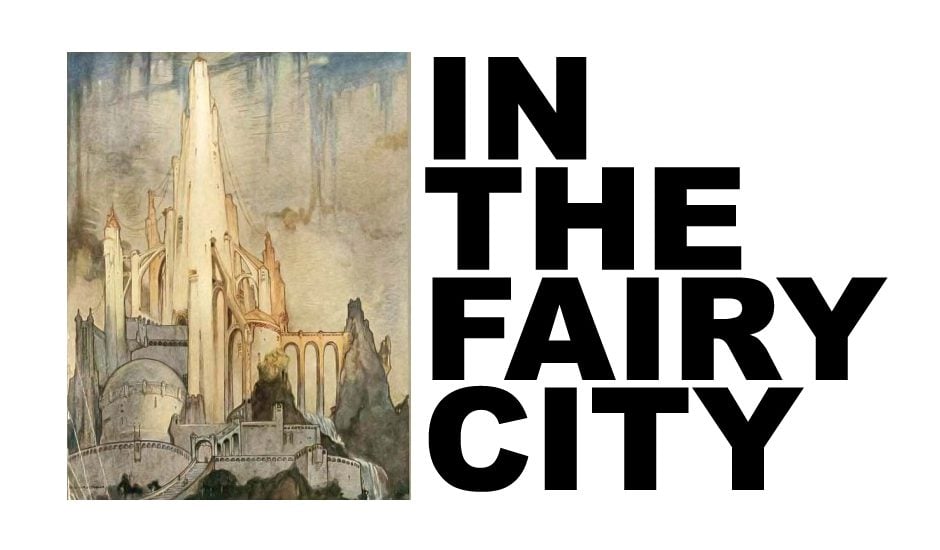
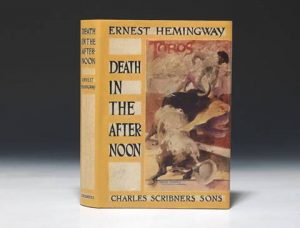
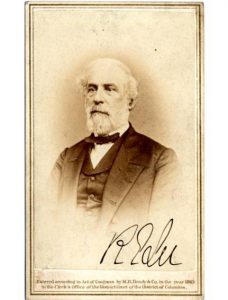
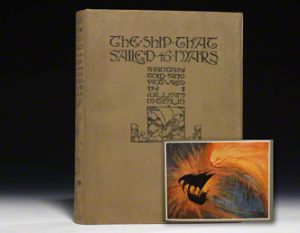
Comments
19 Responses to “Timlin: The Ship that Sailed to Mars”
Cardmon says: June 5, 2013 at 7:53 am
Great book, fantastic illustrations & good to see a book and author that doesn’t normally see the limelight.
Embry Clark says: June 5, 2013 at 5:32 pm
Thanks, Cardmon. I completely agree that Timlin doesn’t get nearly the recognition he should – especially since he created not only the illustrations but the story as well. Stay tuned for other under-the-radar masterpieces in weeks to come!
Dallas Jacobs says: June 16, 2013 at 1:55 am
What beautiful and fantastic illustrations! Done in an evocative style reminiscent of Walter Crane and J.M.W. Turner, they alone make me want to read this tale…too bad that it is so scarce that “want to read” will not be replaced with “enjoyed to have read”…thanks at least for displaying these lustrous illustrations…dj
Embry Clark says: June 16, 2013 at 7:42 pm
Glad you enjoyed reading about Timlin, Dallas. You’re right that the first edition is exceedingly scarce, but I know that a good quality facsimile edition of the book was published several years ago, so maybe you can transition to “have read” that way.
Dallas Jacobs says: June 16, 2013 at 7:55 pm
Cool! I’ll keep an eye out for one, thanx!..dj
Geoff Laidlaw says: May 1, 2014 at 2:53 pm
The reason these first editions are so rare is that no one is prepared to let them out of their possession.
We are blessed to have one and find it enchanting. Some of the fascinating illustrations look like they
could have influenced a later fantasy from one Mr Tolkein.
Embry Clark says: May 5, 2014 at 6:34 pm
I completely agree, Geoff. The collectors I know who have a copy would never give it up!
Kevin Obreg??n says: June 12, 2015 at 7:56 pm
I was blessed with holding a first edition and my hands while researching it’s provenance and the author himself. It was my understanding that Timlin was a neighbor of Tolkien in South Africa, but I can’t find any documentation of that or why I believe this. I could just be projecting that 🙂 that ol’ malleable memory of man’s.
K M Allen says: August 14, 2015 at 11:44 pm
Whilst they were in the same area at the same time (Kimberly, South Africa) we have no documentation of them ever meeting.
W M Timlin was my Grandfather.
Martin says: February 25, 2018 at 4:23 am
They could not have ever meet in South Africa. For very simple reason: Tolkien has left in 1895 while Timlin arrived only in 1912.
David Harris says: August 31, 2015 at 8:45 am
i have this book i was looking to sell but not in excellent condition but all illustrations are still intact. feel free to contact with any questions.
missing dust cover for book
K M Allen says: August 14, 2015 at 11:49 pm
This book was never written for W M Timlin’s son, this would have been impossible as his son (my father) was born in 1929, 6 years after the book was published.
Embry Clark says: August 26, 2015 at 6:58 pm
K.M., thank you so much for the correction! It seems one of the sources I used had incorrect information – my apologies. I’ve made the correction above.
The Ship that Sailed to Mars is one of my absolute favorites. Thank you again for taking the time to comment.
Wendy says: July 29, 2017 at 3:03 pm
Thank you for your rich review! I own a book in good condition from the edition of 250 published in the USA, and am interested in selling to an interested collector.
Embry Clark says: May 12, 2020 at 2:58 pm
Thanks so much, Wendy! Please feel welcome to send any books to sell inquiries to [email protected].
Joe says: December 24, 2017 at 12:33 am
Hi – I have 2 (one published and one unpublished) original Timlin art from the book, along w one unpublished corresponding original written page. Let me know if anyone is interested in exploring further. Best!
Embry Clark says: May 12, 2020 at 2:57 pm
Hello Joe: Please feel welcome to direct any books to sell inquires to [email protected].
Marian Schofield says: February 27, 2020 at 6:36 am
William Timlin was my great great uncle, my grandfather, also William Timlin, was named after him and was my mother???s father.I wish I had inherited even a tiny bit of his talent.
David Pearcy says: September 29, 2023 at 9:04 pm
I’ve only discovered William Timlin by accident late tonight but was immediately drawn to him on two counts. First I too was born in Ashington and secondly, graduated as a (landscape) architect (working initially as a commercial artist). Members of my family also emigrated to South Africa to seek their fortunes. Your blog on him is the best I’ve read so far! And I can’t wait to get copies (reprints lol!) of his book for the grandchildren.